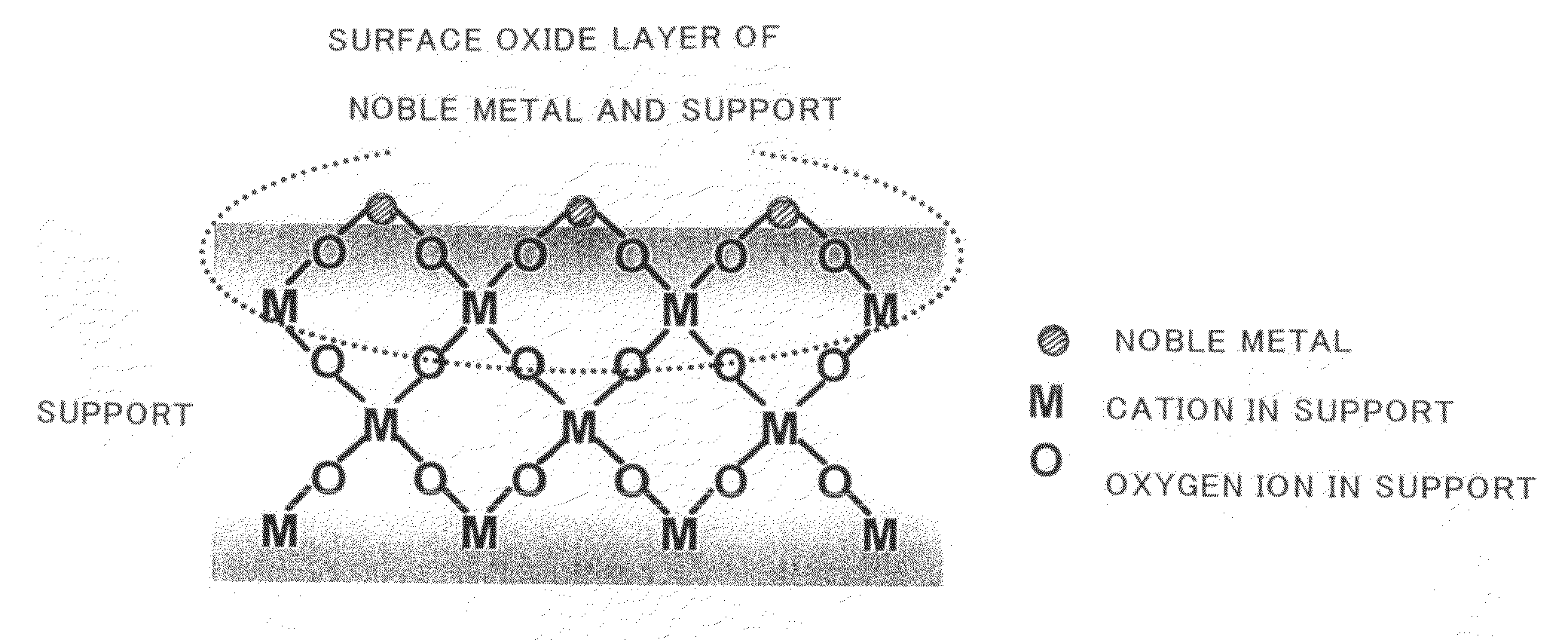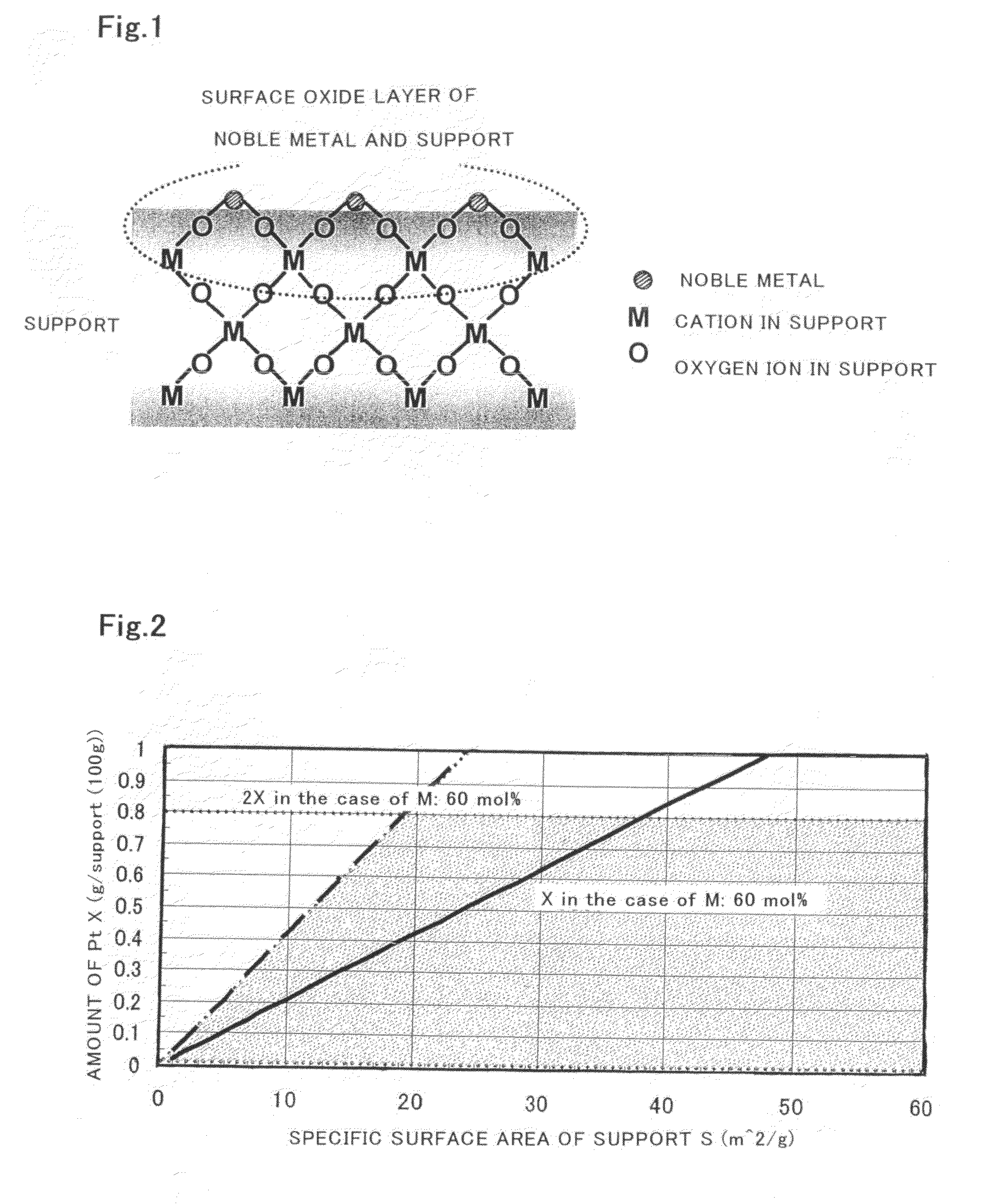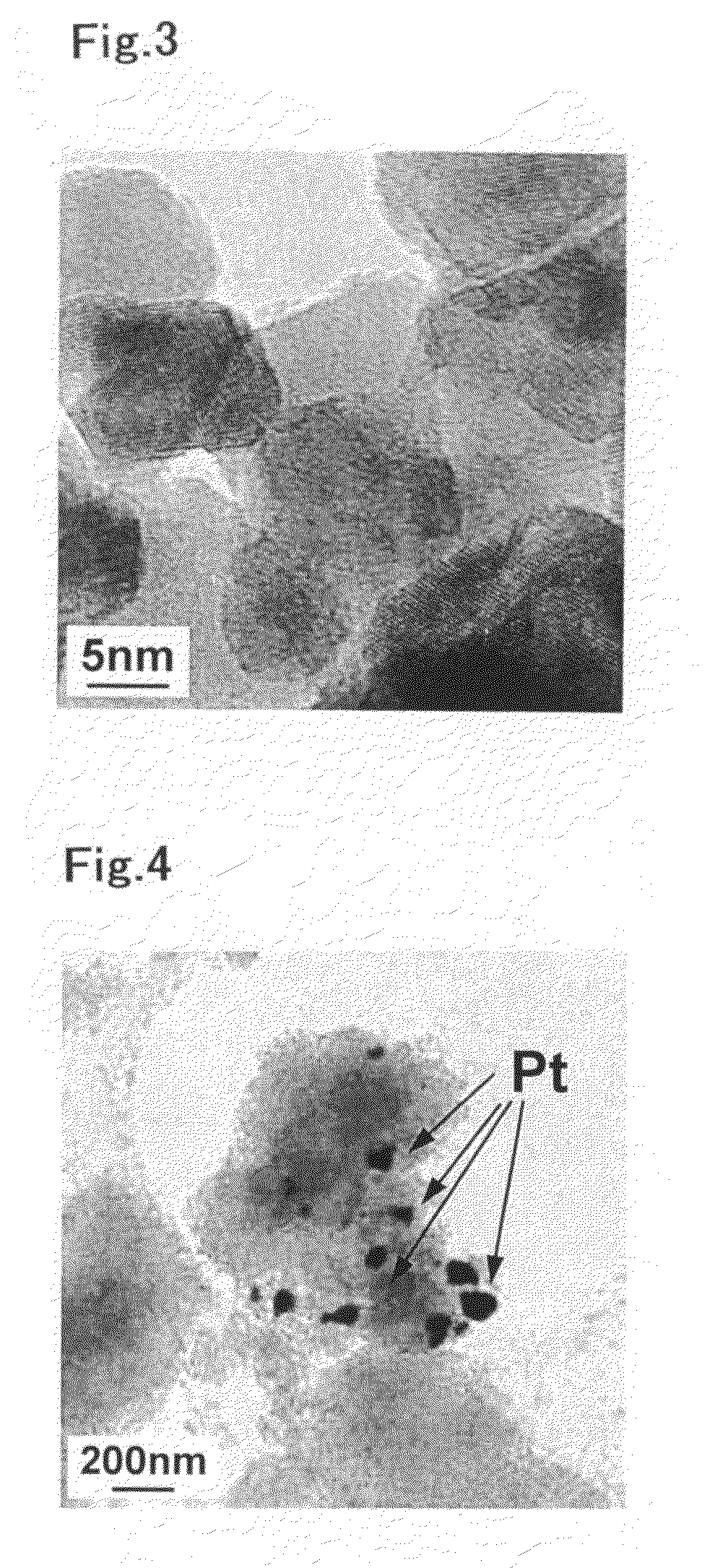Catalyst for Purification of Exhaust Gas, Regeneration Method for the Catalyst, and Apparatus and Method for Purification of Exhaust Gas Using the Catalyst
- Summary
- Abstract
- Description
- Claims
- Application Information
AI Technical Summary
Benefits of technology
Problems solved by technology
Method used
Image
Examples
example 1
[0130]To 2000 g of an aqueous mixture solution containing 242.6 g of an aqueous cerium nitrate solution (containing 28% by weight in terms of CeO2), 157.6 g of an aqueous zirconium oxynitrate solution (containing 18% by weight in terms of ZrO2), 12.6 g of yttrium nitrate and 10 g of a nonionic surfactant (available from Lion Corporation, trade name: Leocon), was added 142 g of aqueous ammonia of a concentration of 25% by weight and then the resulting material was agitated for 10 minutes at room temperature to obtain a coprecipitate. Next, the resulting coprecipitate was filtrated and washed and then dried at 110° C. and further calcined at 1000° C. for 5 hours in the atmosphere to obtain a support made of a cerium-zirconium-yttrium composite oxide (CeO2—ZrO2—Y2O3) The composition ratio of the resulting composite oxide was 55 mol % (CeO2):40 mol % (ZrO2):5 mol % (Y2O3). In addition, the value of the binding energy of the oxygen is orbital of the above composite oxide was obtained by ...
example 2
[0133]To 1500 g of an aqueous mixture solution containing 231 g of an aqueous zirconium oxynitrate solution (containing 18% by weight in terms of ZrO2) and 63 g of lanthanum nitrate, was added 150 g of aqueous ammonia of a concentration of 25% by weight, and then the resulting material was agitated for 10 minutes at room temperature to obtain a coprecipitate. Next, the resulting coprecipitate was filtrated and washed and then dried at 110° C. and further calcined at 1000° C. for 5 hours in the atmosphere to obtain a support made of a zirconium-lanthanum composite oxide (ZrO2—La2O3). The composition ratio of the resulting composite oxide was 65% by weight (ZrO2):35% by weight (La2O3). In addition, the value of the binding energy of the oxygen is orbital of the composite oxide was obtained by XPS, with the value listed in Table 4. Additionally, a catalyst for purification of exhaust gas (Pt / ZrO2—La2O3) of the present invention was obtained in the same manner as in Example 1 except tha...
example 3
[0134]100 g of a cerium-zirconium-yttrium composite oxide (CeO2—ZrO2—Y2O3, composition ratio: 55 mol % CeO2:40 mol % ZrO2:5 mol % Y2O3) obtained by adoption similar to the method of producing a support adopted in Example 1 was agitated in ion-exchanged water and thereto was added 3.38 g of barium nitrate to obtain a mixture solution. Next, the resulting mixture solution was heated, evaporation dried and further dried at 110° C. and then calcined at 500° C. for 5 hours in the atmosphere. Then, 100 g of the support was immersed in a nitric acid aqueous solution of dinitrodiamineplatinum (platinum concentration: 4% by weight), filtrated and washed, and then dried at 110° C. and further calcined at 500° C. for 3 hours in the atmosphere to obtain a catalyst for purification of exhaust gas (Pt / Ba / CeO2—ZrO2—Y2O3) of the present invention. In addition, the amount of platinum supported on the support in the resulting catalyst was 0.5 wt %, the Ba amount for 1 g of the support was 0.000128 mo...
PUM
| Property | Measurement | Unit |
|---|---|---|
| Temperature | aaaaa | aaaaa |
| Temperature | aaaaa | aaaaa |
| Fraction | aaaaa | aaaaa |
Abstract
Description
Claims
Application Information
 Login to View More
Login to View More - R&D
- Intellectual Property
- Life Sciences
- Materials
- Tech Scout
- Unparalleled Data Quality
- Higher Quality Content
- 60% Fewer Hallucinations
Browse by: Latest US Patents, China's latest patents, Technical Efficacy Thesaurus, Application Domain, Technology Topic, Popular Technical Reports.
© 2025 PatSnap. All rights reserved.Legal|Privacy policy|Modern Slavery Act Transparency Statement|Sitemap|About US| Contact US: help@patsnap.com



